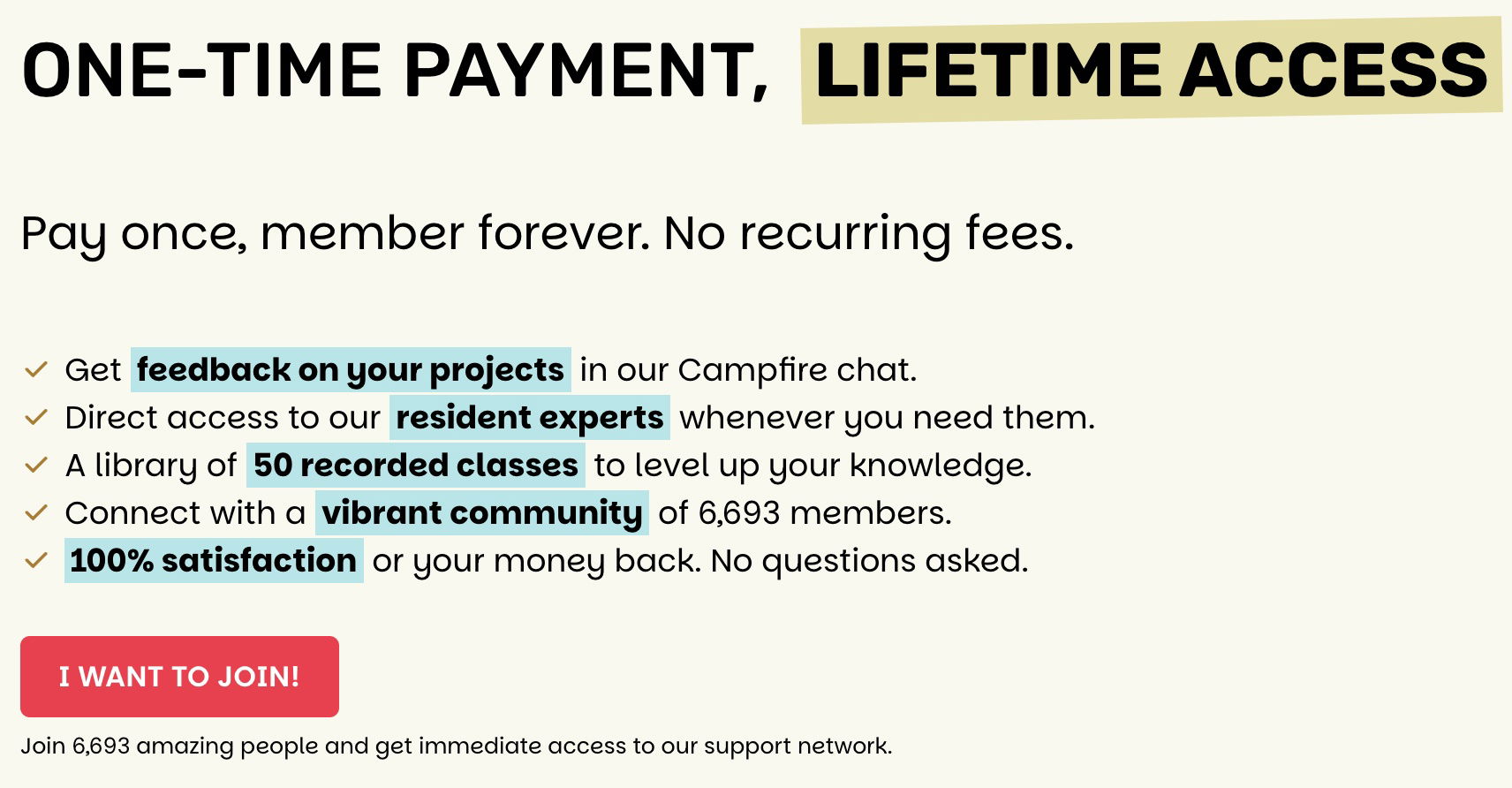Small Bets Pricing
Updated on

The “One-time payment, lifetime access” headline from the Small Bets community is a masterclass in value framing. It tells you everything you need to know in one glance: simple terms, no recurring fees, get in and it’s yours.
Marketing analysis
This works because it removes friction. Recurring payments are mental clutter. The promise of “forever” ownership makes the offer feel safer and bigger. Pair that with social proof (6,693 members) and a 100% satisfaction guarantee, and you’ve just crushed most buyer objections.
Why it works
- Simple and clear — no mental math needed.
- Emphasizes ownership, not rent.
- Eliminates risk with a guarantee.
- Relies on scarcity of “no-strings” offers online.
- Adds credibility with member count and benefits.
Examples
- Basecamp’s “Pay once, use forever” pricing made SaaS buyers curious.
- Gumroad teased “no monthly fees” for creators, boosting signups.
- AppSumo’s lifetime deals are legendary — one-time buyers who never forget.
Analyzed by Swipebot
Loading analysis...